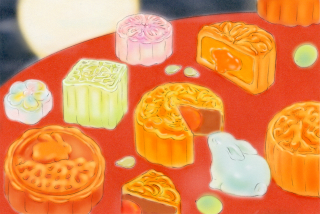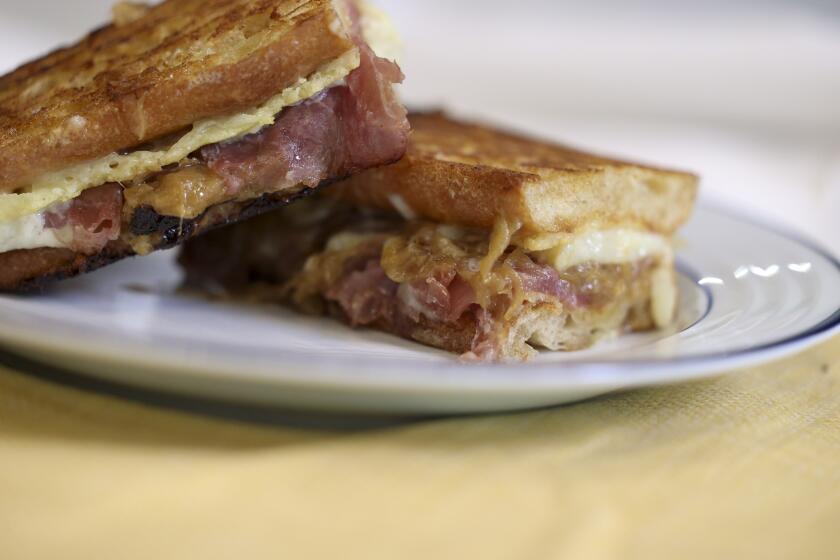A Prune by Any Other Name
Could any fruit have an image problem worse than the prune? Even the California Prune Board has changed its name to the California Dried Plum Board to make the fruit sound more appetizing. Strange for a fuit that, in its native France, is considered a delicacy.
In her book “Bistro Cooking,” restaurant critic Patricia Wells writes, “Until moving to France, I really didn’t feel one way or the other about prunes. But as I’ve traveled the country, and discovered the wonders of this sweet, rich and nutritious dried fruit, I’ve become a true aficionada.”
On a recent visit, my wife and I followed Wells’ lead, which, given the French obsession with prunes, wasn’t hard to do. Most bistro menus from Paris to southern France featured the fruit in delicious incarnations such as prune tart, prunes in red wine with cinnamon and, my favorite, prune sundae: two or three prunes in the bottom of the sundae glass, marinated in Armagnac, topped with vanilla ice cream. Sometimes the sundae was served with prune ice cream and a thick prune compote coating the entire concoction. The flavors were simple, but deep and rich.
But it’s hard to find prunes on the menu in the Golden State, even though California prunes are raised from Agen rootstock and are as delicious as their French counterparts. Unfortunately, most California plum prune crops find their way to supermarkets in cellophane packets or in the form of prune juice--an image that consumers largely equate with laxatives.
In the Napa Valley, chef Philippe Jeanty has no such bias. He regularly features prunes as specials on the menu of his eponymous Napa Valley restaurant. “It’s a marketing thing,” he says. “Customers would ignore them if they were on the everyday menu, but if you have a waiter mention them, explaining that the prunes are marinated in Armagnac with spices, they’ll order the sundae and they’ll love it. For me, it’s one of those wonderful items that deserves recognition.”
Featuring prunes is also a homage to local history. “Napa Valley used to be a prune orchard,” Jeanty says. “That’s what the Napa Valley was all about. Then they put grapes in instead.” Today most prune plums are grown in the San Joaquin Valley and Sacramento.
Closer to home, Pinot Bistro in Studio City has started experimenting with prunes. “The French and the Eastern Europeans love them,” says executive chef Miki Zivkovic. “Americans don’t. But that’s changing.” Although Pinot doesn’t offer prunes on the regular menu, the fruit has started showing up in specials such as prune tart with mascarpone cream. With enough notice, Zivkovic will prepare a prune dish on request.
“Sometimes I’ll serve prune tart with a sweet goat cheese. It sounds like a weird combination but it works,” he says.
*
Mascarpone and Prune Sundae
Serves 6
2 cups red wine
3/4 cup sugar
3/4 pound pitted prunes
1 cup Armagnac
8 ounces mascarpone
Bring wine and sugar to boil in a saucepan, and stir until sugar is dissolved. Boil for approximately 1 minute then add the Armagnac and the prunes. Return to boil, then lower heat and simmer gently for 25 minutes, covered. Remove prunes with slotted spoon, and reduce liquid to half. Pour over prunes, and let cool completely. Refrigerate for 24 to 36 hours. To make sauce, take 1/3 of the prunes and puree in a blender to a thick consistency. Add Armagnac mixture.
Place three prunes each in six glasses and top with a two-ounce scoop of mascarpone. Drizzle prune sauce over each sundae.
More to Read
Eat your way across L.A.
Get our weekly Tasting Notes newsletter for reviews, news and more.
You may occasionally receive promotional content from the Los Angeles Times.







